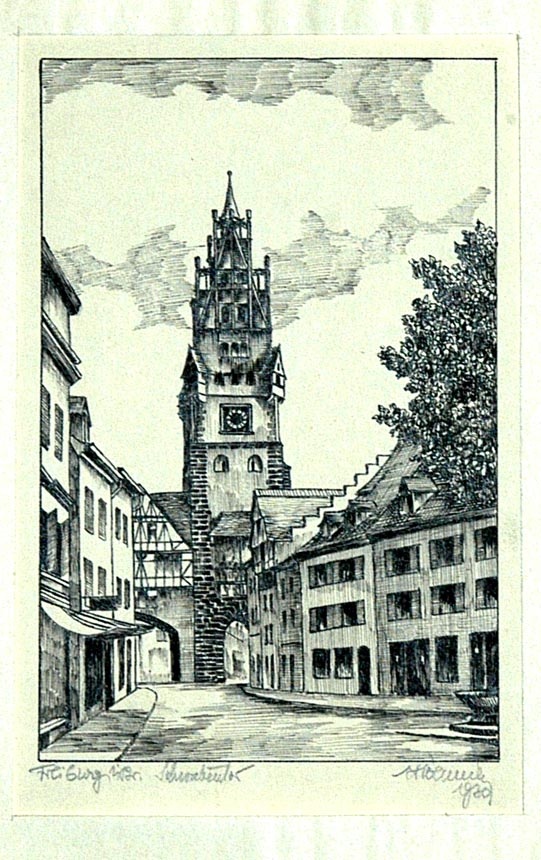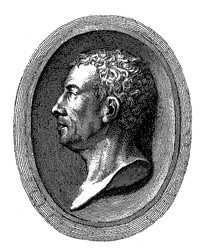Blick von der Straße auf Altstadtseite aus zum Tor. Links der Fachwerkbau mit Tor, links der Torturm, beides flankiert von straßenbegleitetenden Häuserzeilen. Rechts vorn ein angeschnittener Baum und Brunnen.
Das Schwabentor ist das jüngere der beiden noch erhaltenen Stadttore der mittelalterlichen Stadtbefestigung von Freiburg im Breisgau. Die Zeichnung zeigt den Zustand des Torturmes aus der Zeit zwischen 1900 und 1954. In den Jahren um 1900 wurde dieser nach Entwürfen von Carl Schäfer auf fast das Doppelte erhöht und mit einem Treppengiebel nach dem Vorbild norddeutscher Stadttürme versehen. 1954 wurde der Umbau teilweise rückgängig gemacht, und das Schwabentor erhielt ein schlichteres, dem ursprünglichen Zustand ähnelndes Zeltdach.
Bezeichnet:
u.l.: A. Hoennck odH 1930
u.r.: Freiburg in Br. Schwabentor
en

